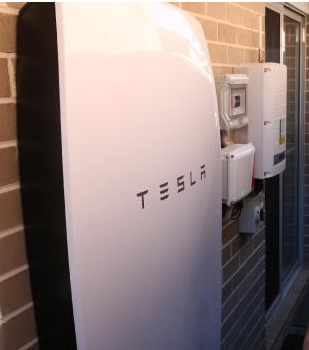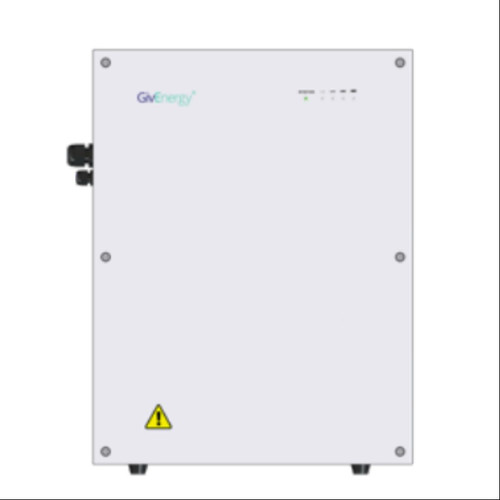Solar Power - Help Needed
-
Starting this thread as I need some advice and recall there's some experts on The Fern...
Installing solar power (6kWh system with battery storage) and an getting a bit confused on choosing the right type of battery.
Been quoted £2,500 for a 8.2 kWh battery which is AC coupled and uses LiFeP04 tech and:
£5,500 for a 10kWh battery, DC coupled and which uses NMC tech.
The question I have is why the huge price difference and do the advantages of the DC coupled battery outweigh the costs? I should add I'm really not too worried about the capacity difference (but wonder if I should be).
I understand how the electrical/electronics stuff works, but am a complete newbie when it comes to the tech in the real world so any input would be great.
-
@victor-meldrew said in Solar Power - Help Needed:
Been quoted £2,500 for a 8.2 kWh battery which is AC coupled and uses LiFeP04 tech and:
£5,500 for a 10kWh battery, DC coupled and which uses NMC tech.Quite a difference. It depends on a variety of factors, but in short:
- NMC has higher energy density, is a bit fussier about operating conditions, and with Cobalt involved will cost more
- LiFePO uses more plentiful materials, has a wider operating temperature, but trades that off (generally) in size of unit per kWh
After that it comes down to manufacturer, warranty, and usable kWh i.e. my Powerwall v1 had 6.4kWh of storage but only 6.0kWh usable at start of life.
Make sure the installer is quoting you usable capacity as a first step.
Whether it is DC or AC coupled doesn't make a huge difference, just a bit of efficiency loss in AC compared to DC coupled.
-
@nta said in Solar Power - Help Needed:
@victor-meldrew said in Solar Power - Help Needed:
Been quoted £2,500 for a 8.2 kWh battery which is AC coupled and uses LiFeP04 tech and:
£5,500 for a 10kWh battery, DC coupled and which uses NMC tech.Quite a difference. It depends on a variety of factors, but in short:
- NMC has higher energy density, is a bit fussier about operating conditions, and with Cobalt involved will cost more
- LiFePO uses more plentiful materials, has a wider operating temperature, but trades that off (generally) in size of unit per kWh
After that it comes down to manufacturer, warranty, and usable kWh i.e. my Powerwall v1 had 6.4kWh of storage but only 6.0kWh usable at start of life.
Make sure the installer is quoting you usable capacity as a first step.
Whether it is DC or AC coupled doesn't make a huge difference, just a bit of efficiency loss in AC compared to DC coupled.
Cheers, that's great and just the info I needed.
It was the price difference which grabbed me and your info has helped. Think the more expensive unit (SolarEdge) is being sold on looks and size - neither of which is a major issue for us.
-
@victor-meldrew sounds like me at 3am at a bar. Looks and size don't worry me too much.
-
@victor-meldrew said in Solar Power - Help Needed:
Cheers, that's great and just the info I needed.
It was the price difference which grabbed me and your info has helped. Think the more expensive unit (SolarEdge) is being sold on looks and size - neither of which is a major issue for us.Ah right - I have a SolarEdge inverter and battery management system hooked up to the Powerwall.
Israeli company I'm told. So far, so good (will be 6 years by end of this month), but I believe they market themselves as "premium", so that might explain it.
From left: battery (duh), then the BMS, then the inverter (5kW).

Basically this was the only inverter on the market at the time that fit the Powerwall.
It also came with power optimisers (also mistakenly called micro-inverters which are a slightly different thing), that control and monitor each panel individually rather than a single string. So the cheaper Chinese Tier 2 panels I ended up with are still quite performant.
What is the brand of the LiFePo battery?
-
@nta said in Solar Power - Help Needed:
Good info on the BMS & inverter - thanks Something else for me to get to understand and consider. At the end of the day it's a cost/value equation over 10 years.
What is the brand of the LiFePo battery?
GivEnergy 8.2kWh
-
@magpie_in_aus said in Solar Power - Help Needed:
@victor-meldrew sounds like me at 3am at a bar. Looks and size don't worry me too much.
My mate in Newport talks about The Magic Bus.
It arrives when your in the pub loo after the 3rd pint and whisks away all the average-looking and ugly women and replaces then with gorgeous-looking women wearing the same clothes and hair....
-
@victor-meldrew have a read of this:
https://news.energysage.com/microinverters-power-optimizers-compared/
Micro Inverters aren't necessarily better than Power Optimisers - just depends on the engineering of the system as a whole.
So basically you have three differences in how the panels operate:
Basic string - where some or all panels are on one circuit that feeds back to the inverter. This is how they used to do it in the old days, when people were getting 6-8 panels on one roof space. The issue is if one panel stops performing (breakage, intermittent shade, etc) it affects the whole array. Once systems got bigger you'd have multiple strings and so on, or if you had panels in different orientation, or needed to balance voltage.
With optimisers or microinverters you don't need to worry about any of that - one or more panels get shaded, the rest just power on.
-
@nta said in Solar Power - Help Needed:
@victor-meldrew have a read of this:
https://news.energysage.com/microinverters-power-optimizers-compared/
Micro Inverters aren't necessarily better than Power Optimisers - just depends on the engineering of the system as a whole.
So basically you have three differences in how the panels operate:
Basic string - where some or all panels are on one circuit that feeds back to the inverter. This is how they used to do it in the old days, when people were getting 6-8 panels on one roof space. The issue is if one panel stops performing (breakage, intermittent shade, etc) it affects the whole array. Once systems got bigger you'd have multiple strings and so on, or if you had panels in different orientation, or needed to balance voltage.
With optimisers or microinverters you don't need to worry about any of that - one or more panels get shaded, the rest just power on.
On the same technical wavelength as the designer now and system set-up pretty much sorted.
Once again thanks for the help.

 GivEnergy 8.2kWh LiFePO4 Battery
GivEnergy 8.2kWh LiFePO4 Battery
